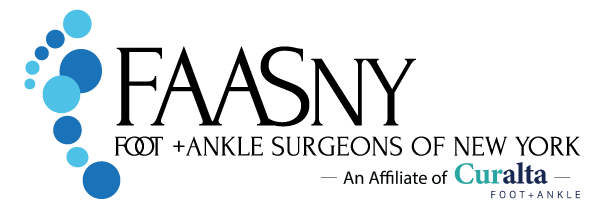

Often, many parents question whether or not they should do something about their child’s flatfeet. Whether by something they read, opinions of friends or family or even in discussions with their pediatrician – many parents often face these concerns. The answer is – it depends. Like many conditions, there are multiple variables that affect how the condition affects the individual person and influence or guide the best treatment approach. Generally speaking, children in their infant and toddler years do not require any treatment since much of their foot and ankle is undergoing development, and can appear ‘flat’ in many cases during early life, which can very well improve as they grow. As they grow and are more active with walking, more normal development may be noticed during their toddler and early childhood years. In situations where there is excessive tripping or falling, consultation with a specialist is the best course of action to determine where the problem is stemming from, which at times can be rooted somewhere else than the foot/ankle.
As the child approaches pre-adolescence (9-12 years of age), we often see parents bringing in their children who are complaining of pain with walking or standing for long periods of time. This is usually because children in this age group are becoming more physically active (sports teams, gym activities at school, extra-curricular activities, taking longer walks with their parents/family), becoming more physically developed, and in many of these cases the increased stress and weight on the developing flatfoot becomes more noticeable to the patient. We often hear the child complaining of pain after prolonged standing or walking for more than a certain number of blocks, usually on the bottom (sole) of the foot or in the outer part of their ankles. Some children may even state that they feel that their feet are ‘weak’ when trying to engage in physical activities for longer periods of time. If left untreated in severe cases of flatfoot, the child may be less likely to engage in physical activity and may also develop obesity as a result of a reluctance towards exercise. Later in life, untreated severe flatfoot deformities may also result in progressive osteoarthritis of various foot and ankle joints as well as tears and degeneration of tendons and ligaments.
In a large number of cases, flatfeet may be mild or moderate and giving either no symptoms or minimal symptoms to the patient, and in other cases severe flatfeet may be both painful and dysfunctional in walking. The findings are various, to say the least, and treatment is aimed at both the severity of the deformity and the characteristics of the reported symptoms. Upon initial presentation in the office, the foot and ankle specialist will first evaluate your child walking and running for short distances as well as standing in one place. This is to get an idea of the type of flatfoot and presence of various factors influencing it (muscle tightness, joint problems, structural concerns, etc). Additionally, weight bearing x-rays should be taken (x-rays where your child is bearing full weight on the limb), to asses the structural architecture of the foot and ankle bones in various points of view. As found with adult patients that have flatfeet there are often other associated problems such as tendon disease, ligament tears or joint degeneration as a result of many years walking on a structurally pathologic foot, however this is generally not observed in the pediatric flatfoot patient, therefore in most (but not all) cases, an MRI is rarely required.
For most patients, mild to moderate flatfeet can be treated effectively with custom foot orthoses (custom inserts made off of a mold, or impression, of your child’s foot), however in other more severe cases, surgery is often recommended, especially when there is a higher severity of either structural pathology or symptoms, or in cases where initial conservative measures (orthoses) are not effective at alleviating pain or dysfunction.
Ultimately, the goal at treatment is to ensure the child has pain-free and functional use of their lower limbs, to engage happily in physical activity (avoiding obesity) and to avoid long term soft tissue (tendon/ligament) or joint (arthritis) damage as a result of an untreated flatfoot.
While the prospect of surgery is very frightening or concerning to any parent, the reality is that children respond extremely well to these procedures, heal quickly, generally have an extremely low incidence of postoperative complications, are back to full functionality very soon and also have an easier time dealing with surgery – they have little responsibilities at younger ages and can more easily tolerate a period of recuperation compared to adults who have careers or children of their own. Procedures selected to correct painful flatfoot deformities in the pediatric patient are often considerably less complicated, and less invasive, than those performed on adult patients who have presence of other disorders as a result of the untreated flatfoot for many years, such as soft tissue and joint deterioration.
If you notice that your child has outward pointing feet or has a collapse of their arch, or is complaining of pain or ‘tiredness’ when standing or walking, the best course of action is to get evaluated by a foot and ankle surgeon for a better understanding of treatment options available. The typical statements of “they will grow out of it,” or “there’s nothing you can do about it,” are both outdated and untrue.


